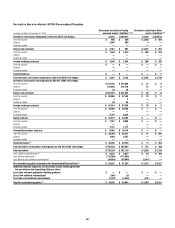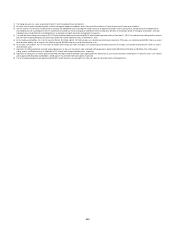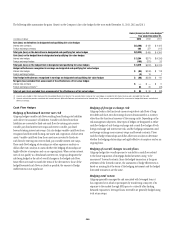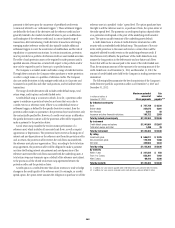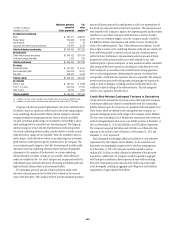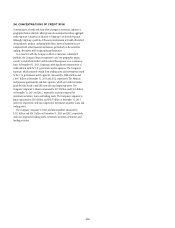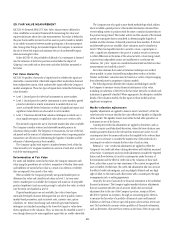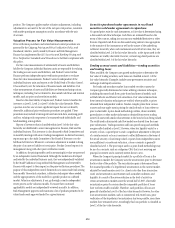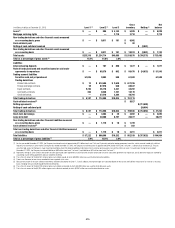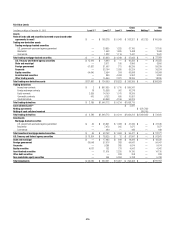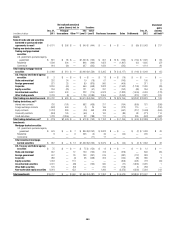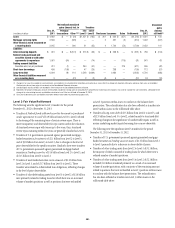Citibank 2013 Annual Report Download - page 289
Download and view the complete annual report
Please find page 289 of the 2013 Citibank annual report below. You can navigate through the pages in the report by either clicking on the pages listed below, or by using the keyword search tool below to find specific information within the annual report.271
25. FAIR VALUE MEASUREMENT
ASC 820-10 (formerly SFAS 157) Fair Value Measurement, defines fair
value, establishes a consistent framework for measuring fair value and
requires disclosures about fair value measurements. Fair value is defined as
the price that would be received to sell an asset or paid to transfer a liability
in an orderly transaction between market participants at the measurement
date. Among other things, the standard requires the Company to maximize
the use of observable inputs and minimize the use of unobservable inputs
when measuring fair value.
Under ASC 820-10, the probability of default of a counterparty is factored
into the valuation of derivative positions and includes the impact of
Citigroup’s own credit risk on derivatives and other liabilities measured at
fair value.
Fair Value Hierarchy
ASC 820-10 specifies a hierarchy of inputs based on whether the inputs are
observable or unobservable. Observable inputs reflect market data obtained
from independent sources, while unobservable inputs reflect the Company’s
market assumptions. These two types of inputs have created the following fair
value hierarchy:
• Level1:Quotedpricesforidentical instruments in active markets.
• Level2:Quotedpricesforsimilar instruments in active markets; quoted
prices for identical or similar instruments in markets that are not
active; and model-derived valuations in which all significant inputs and
significant value drivers are observable in active markets.
• Level3:Valuationsderivedfromvaluationtechniquesinwhichoneor
more significant inputs or significant value drivers are unobservable.
This hierarchy requires the use of observable market data when available.
The Company considers relevant and observable market prices in its
valuations where possible. The frequency of transactions, the size of the bid-
ask spread and the amount of adjustment necessary when comparing similar
transactions are all factors in determining the liquidity of markets and the
relevance of observed prices in those markets.
The Company’s policy with respect to transfers between levels of the fair
value hierarchy is to recognize transfers into and out of each level as of the
end of the reporting period.
Determination of Fair Value
For assets and liabilities carried at fair value, the Company measures such
value using the procedures set out below, irrespective of whether these assets
and liabilities are carried at fair value as a result of an election or whether
they are required to be carried at fair value.
When available, the Company generally uses quoted market prices to
determinefairvalueandclassifiessuchitemsasLevel1.Insomecases
where a market price is available, the Company will make use of acceptable
practical expedients (such as matrix pricing) to calculate fair value, in which
casetheitemsareclassifiedasLevel2.
If quoted market prices are not available, fair value is based upon
internally developed valuation techniques that use, where possible, current
market-based parameters, such as interest rates, currency rates, option
volatilities, etc. Items valued using such internally generated valuation
techniques are classified according to the lowest level input or value driver
thatissignificanttothevaluation.Thus,anitemmaybeclassifiedasLevel3
even though there may be some significant inputs that are readily observable.
The Company may also apply a price-based methodology, which utilizes,
where available, quoted prices or other market information obtained from
recent trading activity in positions with the same or similar characteristics to
the position being valued. The market activity and the amount of the bid-ask
spread are among the factors considered in determining the liquidity of
markets and the relevance of observed prices from those markets. If relevant
and observable prices are available, those valuations may be classified as
Level2.Whenlessliquidityexistsforasecurityorloan,aquotedpriceis
stale, a significant adjustment to the price of a similar security is necessary
to reflect differences in the terms of the actual security or loan being valued,
or prices from independent sources are insufficient to corroborate the
valuation, the “price” inputs are considered unobservable and the fair value
measurementsareclassifiedasLevel3.
Fair value estimates from internal valuation techniques are verified,
where possible, to prices obtained from independent vendors or brokers.
Vendorsandbrokers’valuationsmaybebasedonavarietyofinputsranging
from observed prices to proprietary valuation models.
The following section describes the valuation methodologies used by
the Company to measure various financial instruments at fair value,
including an indication of the level in the fair value hierarchy in which each
instrument is generally classified. Where appropriate, the description includes
details of the valuation models, the key inputs to those models and any
significant assumptions.
Market valuation adjustments
LiquidityadjustmentsareappliedtoitemsinLevel2andLevel3ofthefair
value hierarchy to ensure that the fair value reflects the liquidity or illiquidity
of the market. The liquidity reserve may utilize the bid-offer spread for an
instrument as one of the factors.
Counterparty credit-risk adjustments are applied to derivatives, such as
over-the-counter uncollateralized derivatives, where the base valuation uses
market parameters based on the relevant base interest rate curves. Not all
counterparties have the same credit risk as that implied by the relevant base
curve, so it is necessary to consider the market view of the credit risk of a
counterparty in order to estimate the fair value of such an item.
Bilateral or “own” credit-risk adjustments are applied to reflect the
Company’s own credit risk when valuing derivatives and liabilities measured
at fair value. Counterparty and own credit adjustments consider the expected
future cash flows between Citi and its counterparties under the terms of
the instrument and the effect of credit risk on the valuation of those cash
flows, rather than a point-in-time assessment of the current recognized net
asset or liability. Furthermore, the credit-risk adjustments take into account
the effect of credit-risk mitigants, such as pledged collateral and any legal
right of offset (to the extent such offset exists) with a counterparty through
arrangements such as netting agreements.
Generally, the unit of account for a financial instrument is the individual
financial instrument. The Company applies market valuation adjustments
that are consistent with the unit of account, which does not include
adjustment due to the size of the Company’s position, except as follows.
ASC 820-10 permits an exception, through an accounting policy election,
to measure the fair value of a portfolio of financial assets and financial
liabilities on the basis of the net open risk position when certain criteria are
met. Citi has elected to measure certain portfolios of financial instruments,
such as derivatives, that meet those criteria on the basis of the net open risk


